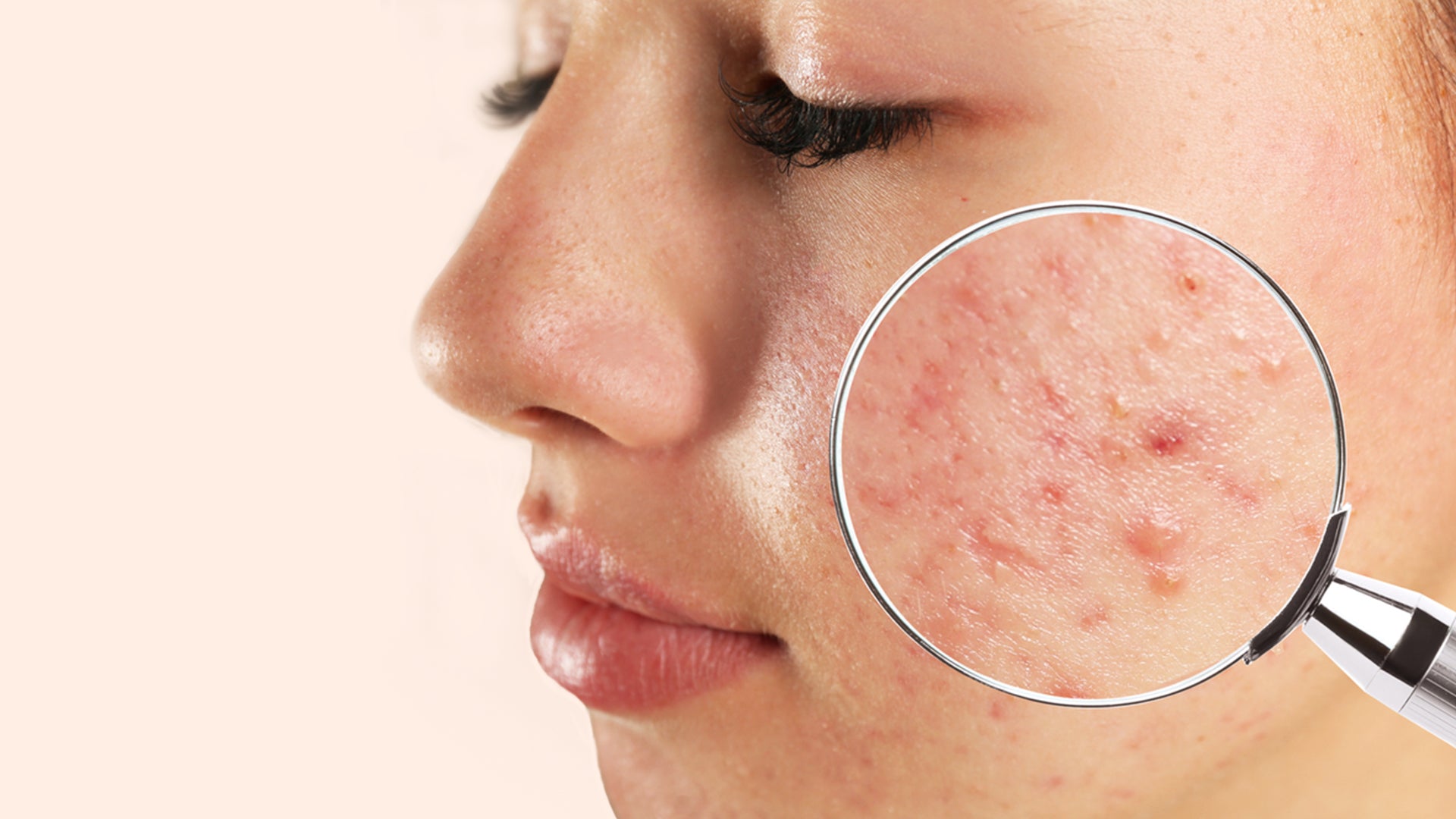All types of acne are not equal and cannot be treated in the same way. Every kind of acne requires its own different kind of treatment. Let's understand different types of acne- blackheads, whiteheads, pimples, cysts, Milia.
Whiteheads
When a pore is blocked it's called a Comedone. When it is under the skin its called open pore or whitehead. Unlike pimples, these are not painful or red. They have less infection around them and when squeezed they easily come out, without much scaring.
Blackheads
They are also formed by blocked pore that contains oil that has oxidized with the air causing it to turn black. Almost anyone with enlarged pores has them.
How to treat blackheads
- After Steam/ Shower apply oil absorbing face masks like our Neem Green Tea Mask after shower or steam
- Use chemical exfoliant products regularly - Glycolic Acid/ Lactic Acid / Salicylic Acid / Honey. Yes, honey is a chemical exfoliant, and by the term chemical, I mean something which dissolves dead skin cells instead of physically scrubbing them.
- Prevent Oil from oxidising- More recent Acne studies are linked to antioxidants. Acne skin is shown to have lesser antioxidants than their counterparts. Also use of antioxidants is a more modern method to handle both acne and aging. Antioxidants suitable for Acne prone skin are - Vitamin B3, Vitamin C and Green Tea.
Pimples (Papules and Pustules)
Comedones that become infected are Pimples. They are red, inflamed blemishes that contain pus (inflammatory blood cells) caused by Propionibacterium acnes (P. acnes) bacteria. They can easily cause a post-breakout dark stop and scar due to the surface of the skin being broken as the white pus exits the pore. It is not good to squeeze a pimple, as the infection under skin may burst and spread. Chances are you will develop more acne or deeper cystic acne.They are usually associated with bacteria, so the best ingredients to treat them have anti-bacterial properties. They are usually topical (or applied), and some of them require prescription. The main symptom of a papule is inflammation and irritation so the goal is not to dry it out with acne products but rather to calm down the inflammation
Anti-bacterial ingredients are
- Antibiotics
- Benzoyl peroxide
- Tea tree oil
- Green Tea
- Neem
Anti-inflammatory ingredients are
- Cortisol
- Green Tea
- Rice
- Lotus Extracts
- Niacinamide , Vit B3
Nodules and cysts
The most extreme cases of acne are nodules and cysts. The bacteria is trapped deep inside the skin and is infected there. Cysts are hard, painful bumps that develop deep within the skin and can linger for weeks. They are the most frustrating type of inflammatory blemish because they last the longest and can cause long-term scarring. (Especially when cysts turn into nodules, which occur at an even deeper level in the skin.)
Never pick a cyst, you will never be able to get the infection out. Also, a cyst will most likely leave your skin with a deep scar.
How to treat cysts
- Visiting a doctor should be your priority if you have cystic acne.
- Use Antibiotics -Oral and topical, prescribed my a dermatologist
- Contraceptive pill - Regulates hormones (androgens) causing excess oil production.
- Retinoids have been useful in treating acne but yo have to bear with the side effects for 4 months before seeing any results.
Spot Treatments
- After a cyst is formed cortisone injection by a dermatologist is the only option to bring it down, else it will leave you with a scar.
- You can also keep a cortisol ointment at hand and apply it twice daily to the cyst. Remember Cortisol is a steroid used on skin, never overuse it but applying 2-3 times a month shouldnt do any harm.
- Essential oils that are antibacterial work here as spot treatments. Essentials are powerful plant extracted chemicals and should be used with caution. Ex. Tea tree oil, Lemon, Eucalyptus, Rosemary, Lemon, Juniper, cajeput








 +91 9347578980
+91 9347578980